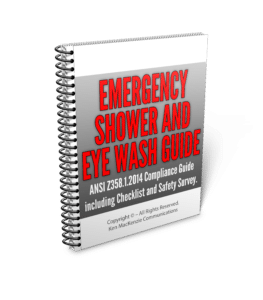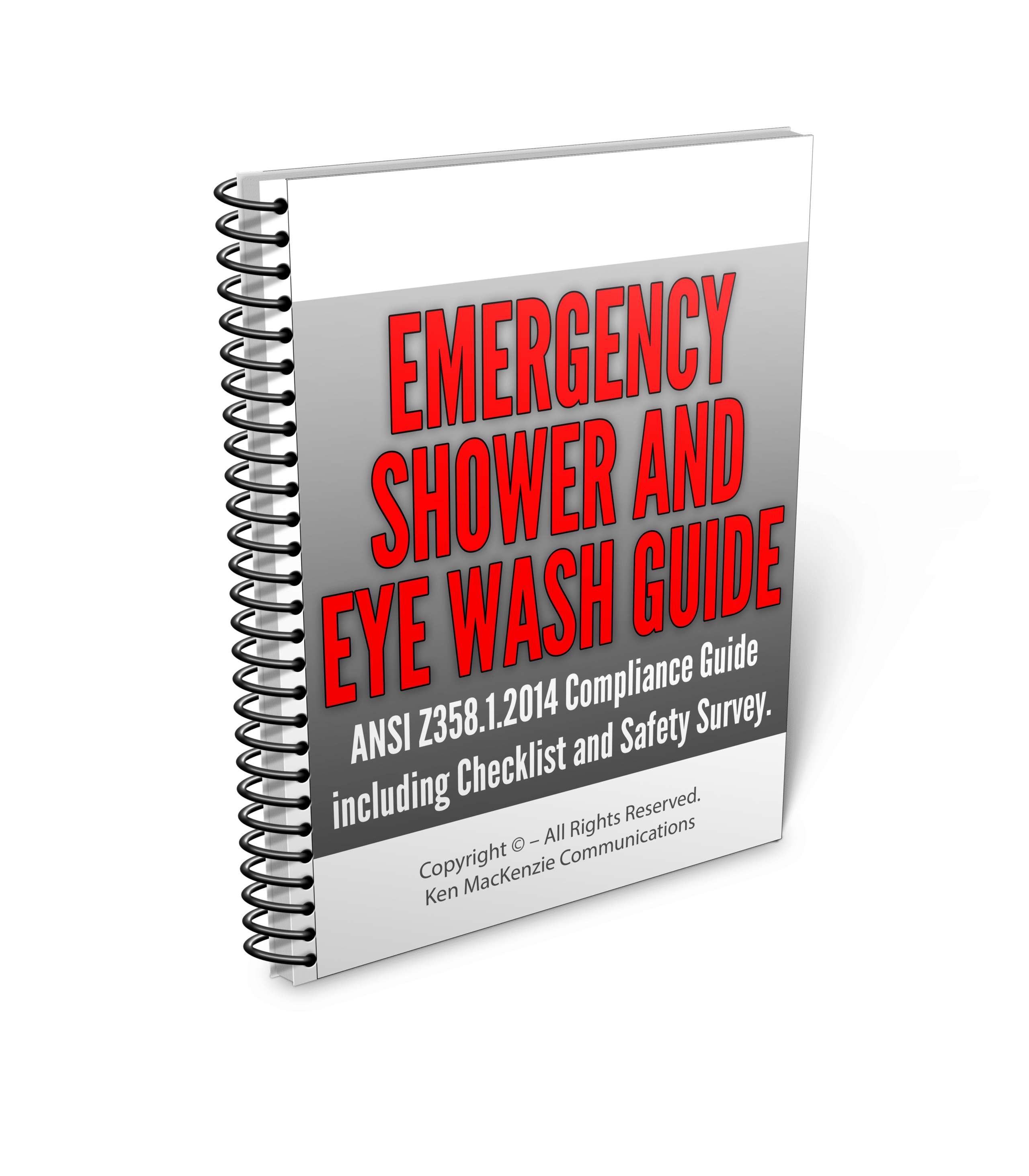Emergency Eye Care 101
How to Use an Eyewash Station the Right Way!
Welcome to our comprehensive guide on how to use an eyewash station. In this article, I will provide you with expert tips and guidelines for the proper usage and maintenance of eyewash stations to ensure the safety of your employees’ eyes.
Eyewash stations are essential safety measures that can help prevent eye injuries from occurring in the workplace. They are designed to quickly flush and rinse harmful substances from an individual’s eyes to prevent serious damage and potential vision loss.
It’s vital to understand the basics of eyewash stations, how to select the right one for your specific needs, proper installation and maintenance, and how to properly train employees on their usage.
I will also cover the step-by-step protocol for utilizing an eyewash station when responding to eye injuries, common mistakes to avoid, and other eye safety measures that should be implemented in the workplace.
Key Takeaways on How to Use an Eyewash Station:
- Eyewash stations are essential safety measures for preventing eye injuries in the workplace.
- Proper understanding of eyewash station basics, selection, installation, and maintenance is crucial for optimal safety.
- Training employees on how to use eyewash stations correctly is necessary to ensure quick and effective response to an eye injury.
- Regular inspections and recordkeeping are essential for compliance with safety regulations.
- Additional eye safety measures, such as PPE and regular eye exams, should be implemented alongside the use of eyewash stations.
Understanding Eyewash Station Basics
I have come across many workplace accidents that could have been prevented with proper safety measures. One essential safety device that every workplace should have is an eyewash station. An eyewash station is a piece of safety equipment that allows individuals to irrigate their eyes in case of exposure to harmful substances or debris.
There are different types of eyewash stations available, including plumbed and portable models. Plumbed eyewash stations are connected to a reliable source of potable water and require professional installation. On the other hand, portable eyewash stations are self-contained and can be moved to different locations as needed.
Regardless of the type of eyewash station, it is crucial to follow proper eyewash station procedures for optimal safety. This includes ensuring that the water temperature is between 60 and 100°F and the water flow rate is at least 0.4 gallons per minute. Accessibility to the eyewash station is also important to ensure that it can be used quickly in case of an emergency.
Proper maintenance and testing of the eyewash station is also important to ensure that it remains in good working condition. Regular inspections and recordkeeping are crucial to comply with safety regulations and ensure that the eyewash station is ready to be used in the event of an emergency.
Amazon offers a Range of Eyewash Stations
Selecting the Right Eyewash Station for Your Needs
Choosing the appropriate eyewash station requires careful consideration of several key factors. It is important to select the right type of eyewash station based on the specific work environment and potential hazards.
Water Temperature: The temperature of the water used in the eyewash station is critical for the safety and comfort of the user. The ideal water temperature should be between 60°F and 100°F. Temperatures outside of this range can cause discomfort and further injury to the eyes.
Flow Rate: The flow rate of the eyewash station should be sufficient to provide a steady stream of water to flush out the eyes. The recommended flow rate is between 0.4 and 1.5 gallons per minute.
Accessibility: The eyewash station should be easily accessible in case of an emergency. It is recommended to install the eyewash station within 10 seconds of the hazard area.
Type of Eyewash Station: The type of eyewash station chosen should be appropriate for the specific hazard. For example, a faucet-mounted eyewash station may be suitable for a laboratory setting, while a free-standing or wall-mounted station may be more appropriate for a factory or construction site.
Additional Features: Other factors to consider when selecting an eyewash station include the ease of use, durability, and maintenance requirements. It may be helpful to consult with a safety professional or supplier to ensure that the chosen eyewash station meets all necessary safety regulations and guidelines.
Keep in mind that proper selection and installation of the eyewash station is just the first step. Regular inspections, maintenance, and employee training are also crucial for ensuring the eyewash station is effective in an emergency. In the next section, I will provide guidance on installing and maintaining eyewash stations.
Installing and Maintaining Eyewash Stations
Proper installation and maintenance of eyewash stations is crucial to ensuring their effectiveness in case of an emergency. Here are some key considerations:
| Installation | Maintenance |
|---|---|
| 1. Eyewash stations should be installed in areas that are easily accessible and clearly marked with signage for quick identification during an emergency. | 1. Regular inspections, testing, and maintenance should be performed to ensure the eyewash station is in proper working condition. |
| 2. The eyewash station should be placed close to potential hazards, such as chemical storage areas or machinery that could cause eye injuries. | 2. The water source should be flushed weekly to prevent buildup of sediment or bacteria. |
| 3. The water supply should be connected to a reliable source of potable or clean water. | 3. Any damaged or worn-out parts should be replaced immediately to ensure proper functioning. |
| Tip: Keeping a log of maintenance and inspection activities can help ensure compliance with safety regulations. |
In addition to proper installation and maintenance, it’s also important to ensure that the eyewash station is being used effectively. Make sure employees are trained on the proper technique for using the station, and that they know to flush their eyes for the recommended duration (usually 15 minutes) for best results.
Amazon offers a Range of Eyewash Stations
How to Use an Eyewash Station – Training Employees on Usage
Proper training on how to use an eyewash station is crucial in case of an emergency. As an expert in eye safety measures, I recommend that all employees in a workplace receive thorough and regular training on the proper use of an eyewash station.
During training, emphasize the importance of identifying an eye emergency and how to use an eyewash station properly. Walk through the steps of flushing the eyes for the recommended amount of time and how to hold the eyelids open during the process.
It is also important to discuss safety protocols for eyewashing, such as what to do if only one eye is affected, how to dispose of contaminated water, and when to seek further medical attention.
Regular training and reminders can help ensure that employees are equipped with the knowledge and skills necessary on how to use an eyewash station properly in case of an emergency.

Responding to Eye Injuries: Step-by-Step Eyewash Station Protocol
When an eye injury occurs, time is of the essence. Proper utilization of the eyewash station can make all the difference in minimizing damage to the eye. Here is a step-by-step protocol to follow:
- Act quickly: If an eye injury occurs, it is crucial to act immediately. Quickly move the affected person to the nearest eyewash station. Every second counts!
- Remove contact lenses and eyewear: In case of a chemical exposure, remove any contact lenses or eyewear that may trap the harmful substances against the eye.
- Flush the eyes: Activate the eyewash station using the handle or button, depending on the type of eyewash station. Tilt the head forward, hold the eyelids open, and flush the eyes with water for at least 15 minutes. Make sure the water is at the right temperature to avoid causing further damage to the eye.
- Seek medical attention: After flushing the eyes, seek medical attention. Even if the injury seems minor, a doctor should still evaluate the eye to ensure proper treatment and prevent further complications.
Remember, proper use on how to use an eyewash station is critical for preventing further damage to the eye. It is essential to educate everyone in the workplace on the correct protocols for responding to an eye injury and practice them regularly.
Amazon offers a Range of Eyewash Stations
Eyewash Station Inspections and Recordkeeping
Regular inspections and recordkeeping are essential to ensure compliance with safety regulations and maintain the effectiveness of your eyewash station. Below are some guidelines on how to perform inspections and keep accurate records.
| Inspection Checklist | Frequency |
|---|---|
| Check the water temperature | Weekly |
| Check the water flow rate | Weekly |
| Verify the proper function of the eyewash nozzles | Monthly |
| Confirm the accessibility and visibility of the station | Monthly |
| Inspect the station for any damage or leaks | Quarterly |
| Perform a full flushing test | Annually |
It is important to keep records of these inspections and any maintenance performed on the station. This documentation should include the date of the inspection, the name of the inspector, and any repairs or replacements made.
In addition, it is recommended to create a schedule for when the eyewash station should be flushed, as stagnant water can promote bacterial growth. The frequency of flushing should be determined by the water temperature and the manufacturer’s guidelines.
By following these guidelines, you can ensure that your eyewash station is always in good working condition and ready to use in case of an emergency.
Common Eyewash Station Mistakes to Avoid
While eyewash stations are essential for eye safety in the workplace, improper usage can lead to further injury. As an expert in the field, I have seen firsthand the common mistakes that workers make when using eyewash stations. Here are some of the most frequent errors to avoid:
| Mistake | Why it’s a problem |
|---|---|
| Using the wrong water temperature | Water that is too hot or too cold can further damage the eyes. It’s important to use lukewarm water that is between 60-100°F |
| Not flushing eyes for the recommended duration | The eyes need to be rinsed for at least 15 minutes to ensure all harmful particles are removed. Anything shorter may not be enough to fully cleanse the eyes. |
| Using expired solutions | Eyewash solutions have an expiration date and using them past that date can render them ineffective in cleansing the eyes of harmful substances. |
| Not properly testing the station and solutions | Regular testing is necessary to make sure that the station and solution are in proper working condition in case of an emergency. |
By avoiding these common mistakes, workers can ensure that eyewash stations are effective in cases of eye injury. It is the responsibility of both employers and employees to educate themselves on the proper usage and maintenance of eyewash stations to ensure maximum eye safety in the workplace.
Eye Safety Best Practices Beyond Eyewash Stations
While eyewash stations are a crucial component of eye safety in the workplace, there are additional measures that should be taken to protect workers’ eyesight. One of the most important practices is the consistent use of personal protective equipment (PPE). This includes safety glasses or goggles, face shields, and helmets. Employers must ensure that the PPE provided to their workers is suitable for the task at hand and that it is properly maintained.
Another essential element of eye safety is regular eye exams. Even if a worker is not experiencing any vision problems, they should have their eyes examined at least once a year. This is especially important for those who work in environments with potential eye hazards, as early detection of any issues can prevent further damage.
It’s also crucial to ensure that work areas are well-lit, as poor lighting can cause strain on the eyes and increase the risk of accidents. Employers should also be mindful of the types of chemicals and substances used in the workplace and take steps to minimize exposure and provide workers with proper training on handling hazardous materials.
Finally, promoting a culture of safety in the workplace is vital for overall eye safety. This includes providing ongoing eye safety training and encouraging workers to report any concerns they may have. Employers should regularly assess their eye safety protocols and make improvements as needed.
By implementing these additional eye safety measures alongside the proper use of eyewash stations, employers can help protect workers’ vision and avoid potentially devastating eye injuries.
Before you leave….
I have provided expert tips and guidelines for using and maintaining eyewash stations in the workplace. It is essential to understand the basics of eyewash stations, choose the right one for your needs, and install and maintain it properly. Training employees on how to use an eyewash station and responding to eye injuries is crucial, as well as conducting regular inspections and recordkeeping.
Eye Safety Must Be a Priority
By following these best practices, you can ensure that your workplace is equipped with effective eye safety measures and that your employees are prepared to respond to eye injuries correctly. It is essential to prioritize eye safety in your workplace and take additional measures, such as using personal protective equipment (PPE), encouraging regular eye exams, and avoiding common eyewash station mistakes.
As you work to create a safer work environment, remember that prevention is key. Investing time and resources in eye safety measures today can prevent accidents that could lead to lifelong eye damage or blindness. Thank you for taking the time to prioritize eye safety in your workplace.
FAQ’s on How to Use an Eyewash Station
Q: What is an eyewash station and why is it important?
A: An eyewash station is a safety device designed to rinse the eyes in case of exposure to hazardous materials or eye injuries. Eyewash stations are crucial for preventing further damage to the eyes and providing immediate relief.
Q: How do I choose the right eyewash station for my needs?
A: When selecting an eyewash station, consider factors such as the work environment, potential hazards, water temperature, and flow rate. It is important to choose a station that meets the specific requirements of your workplace to ensure optimal safety.
Q: How should eyewash stations be installed and maintained?
A: Eyewash stations should be installed in accessible locations with proper signage. Regular maintenance, inspections, and testing should be conducted to ensure the station remains in good working condition. This includes checking water flow and ensuring the flushing fluid is clean and at the correct temperature.
Q: How do I train employees on eyewash station usage?
A: Proper training is essential to ensure employees know how to use an eyewash station correctly. Educate employees on when and how to use the station, as well as the importance of following safety protocols. Regular refresher training should also be conducted.
Q: What is the step-by-step protocol for using an eyewash station in response to eye injuries?
A: When responding to eye injuries, follow these steps: 1. Activate the eyewash station immediately. 2. Hold the eyes open and flush them with water for a minimum of 15 minutes. 3. Ensure the water flushes from the inner corner of the eye to the outer corner. 4. Seek medical attention after flushing.
Q: How often should eyewash stations be inspected and what records should be kept?
A: Eyewash stations should be inspected regularly, ideally on a weekly basis. During inspections, check the water flow, temperature, and cleanliness. Keep accurate records of inspections, maintenance, and any incidents related to the eyewash station.
Q: What are common mistakes to avoid when using an eyewash station?
A: Common mistakes include using incorrect water temperature, not flushing the eyes for the recommended duration, and not properly rinsing both eyes. It is crucial to follow manufacturer guidelines and training protocols for effective eyewash station usage.
Q: What are some additional eye safety measures to implement alongside eyewash stations?
A: In addition to eyewash stations, prioritize the use of personal protective equipment (PPE) such as safety glasses or goggles. Regular eye exams and practicing good eye hygiene are also important measures to maintain eye health and safety.
The information provided in this how to use an eyewash station article is for informational purposes only and should not be considered as professional advice. Always consult qualified professionals for specific safety recommendations and guidance for your workplace.
Amazon offers a Range of Eyewash Stations
Safety Shower Requirements | 5 Factors to Consider
As an Amazon Affiliate, I earn from qualifying purchases. SafetyShowerSystems.com is a participant in the Amazon Services LLC Associates Program, an affiliate advertising program designed to provide a means for sites to earn advertising fees by advertising and linking to Amazon.com,
Links on this best practices on how to use an eyewash station page are sponsored affiliate links and the owner makes a commission if you buy after clicking these links. The owner is not a bona fide user of using an eyewash station. However, he has thoroughly researched it and provided a personal opinion only. This disclosure is in accordance with the Federal Trade Commission’s 16 CFR, Part 255: “Guides Concerning the Use of Endorsements and Testimonials in Advertising.”
Filed under: ANSI Z358.1 2014 • UNITED STATES


